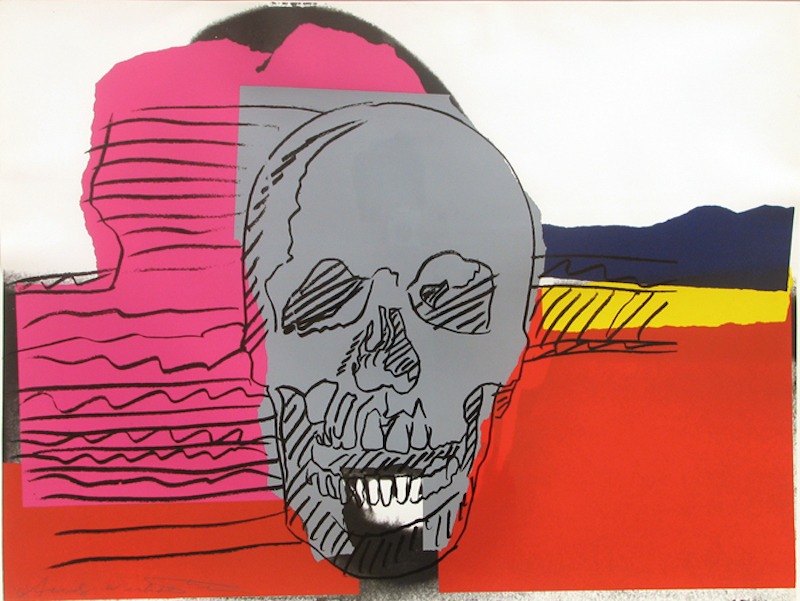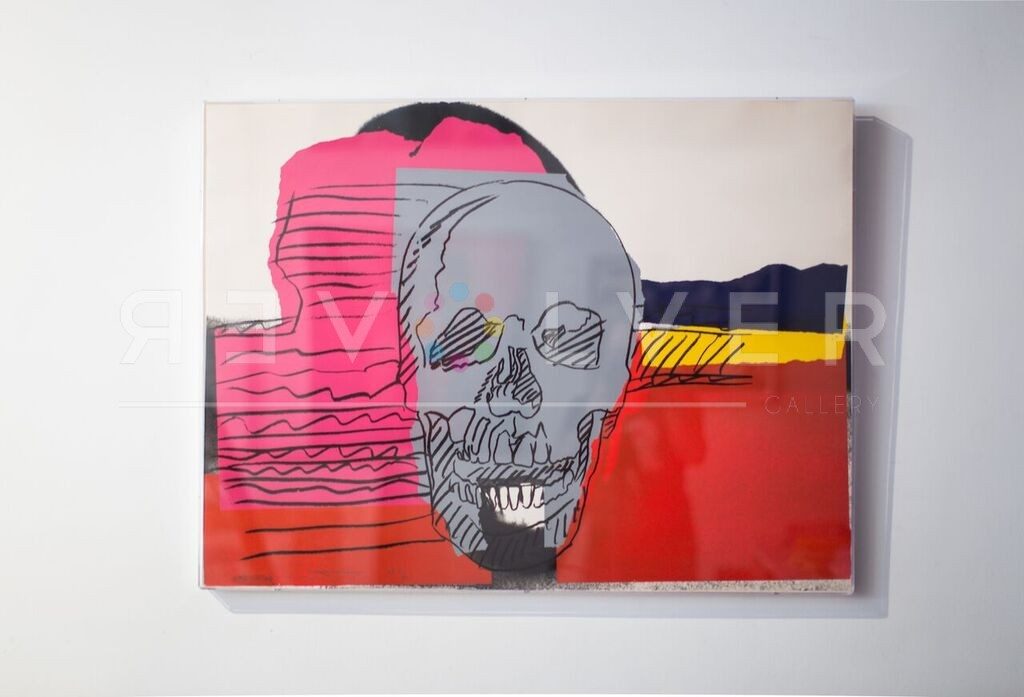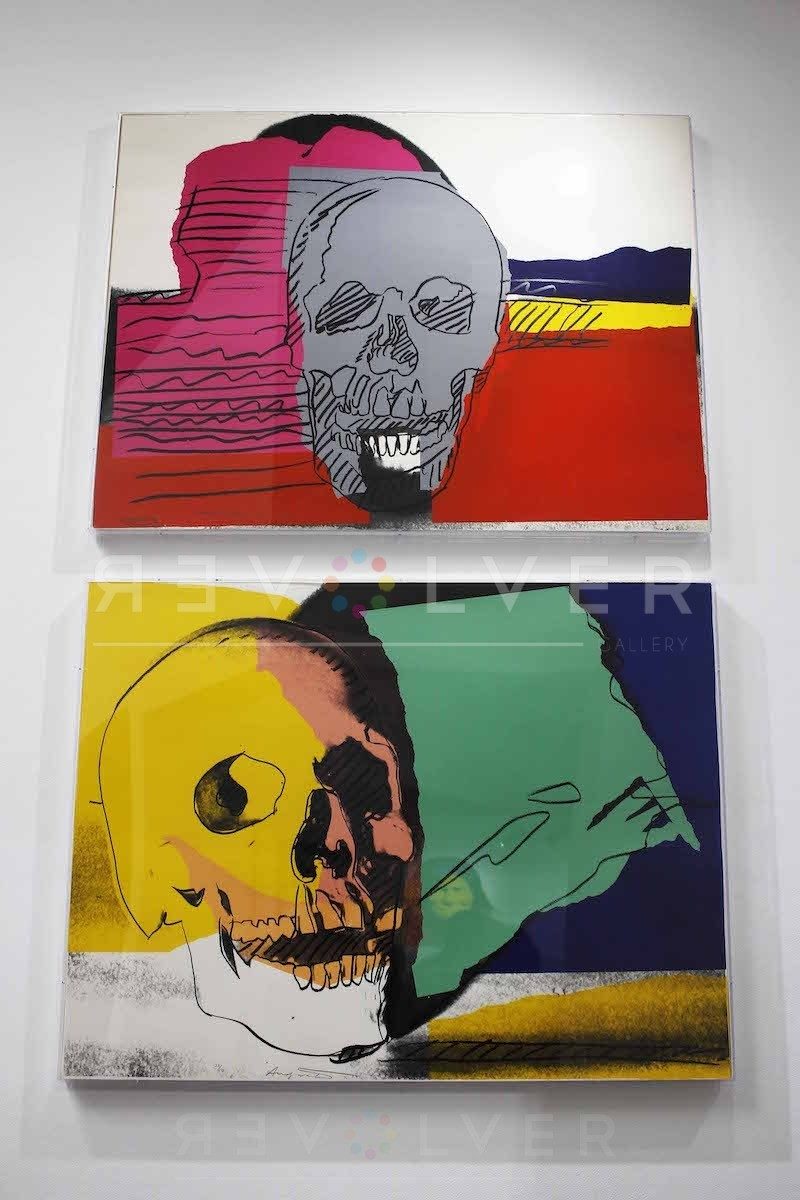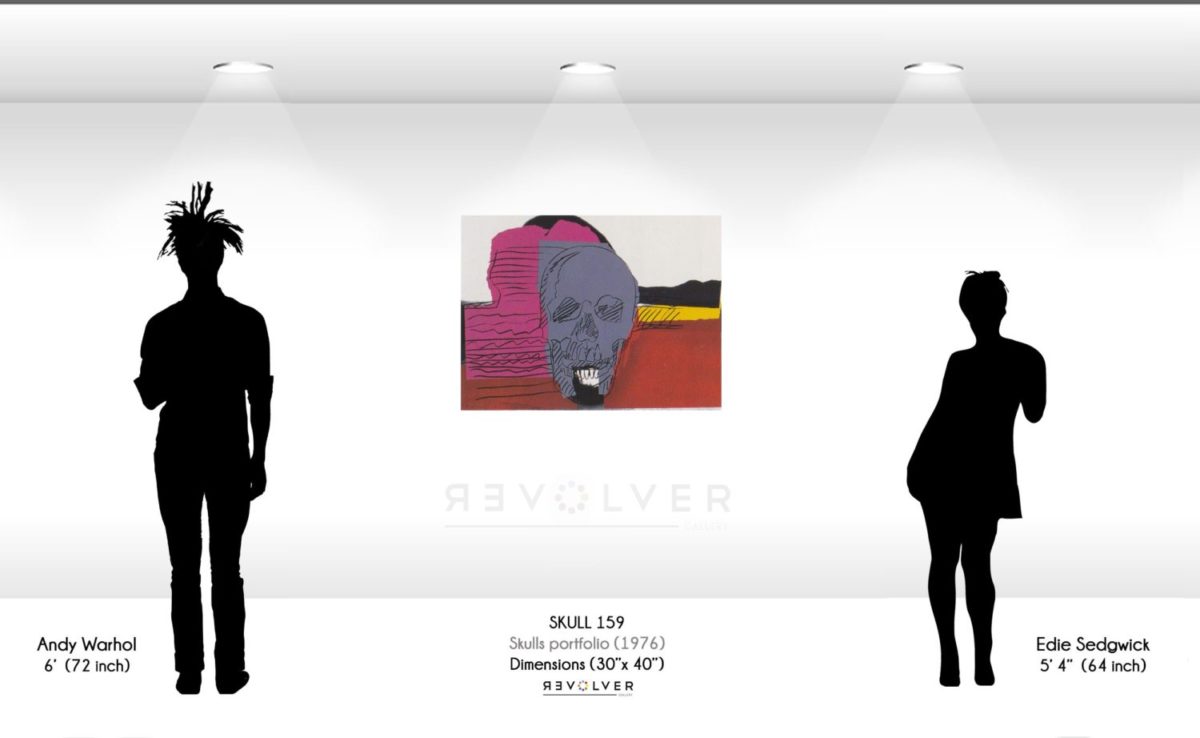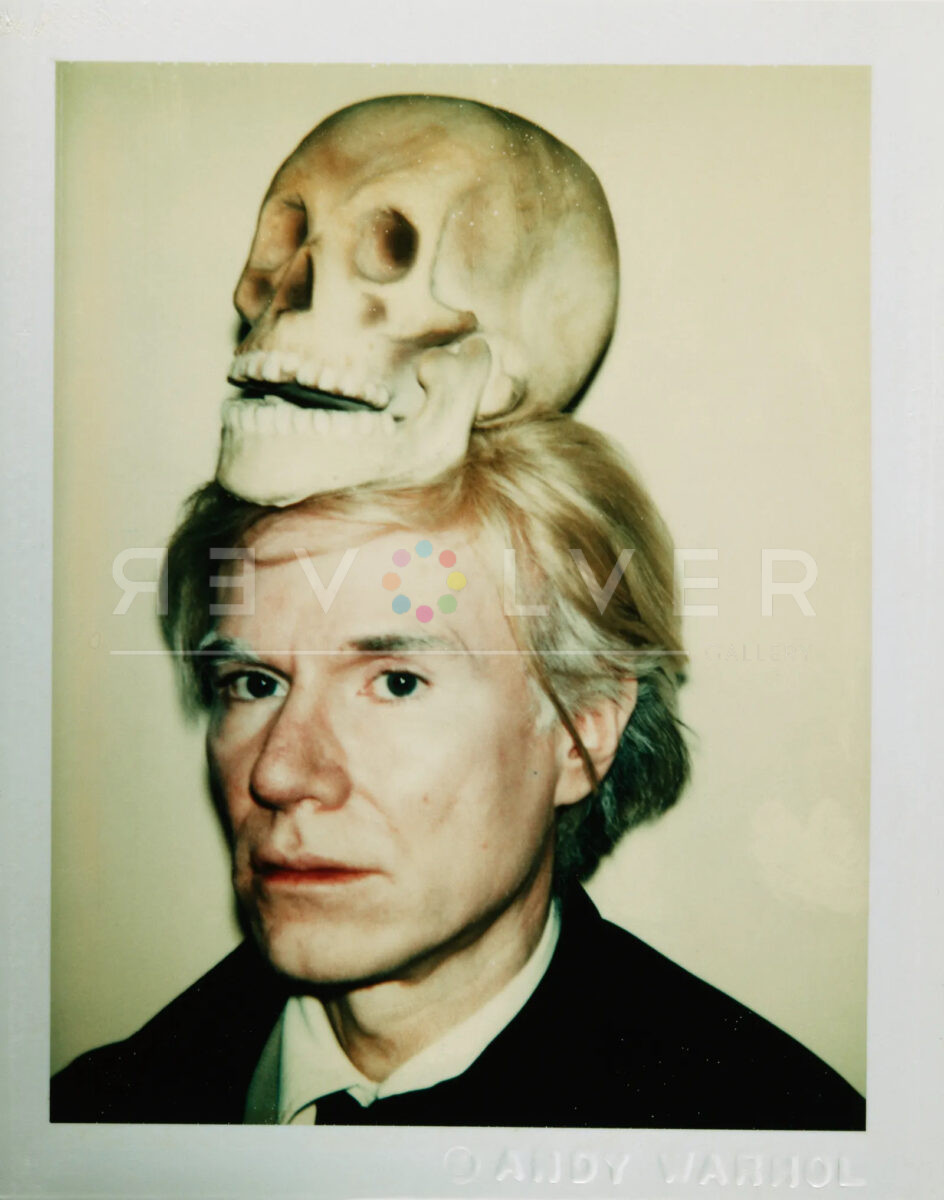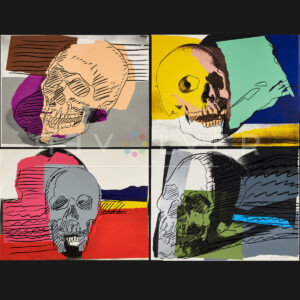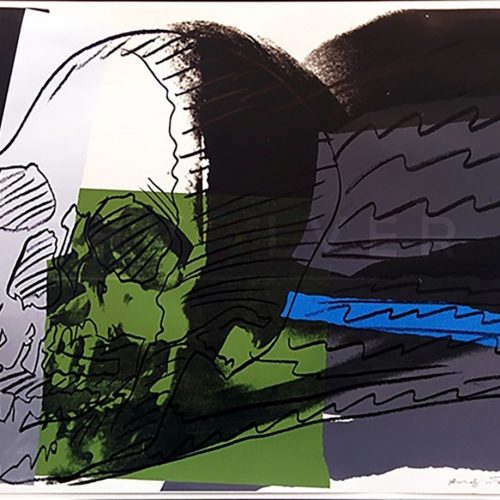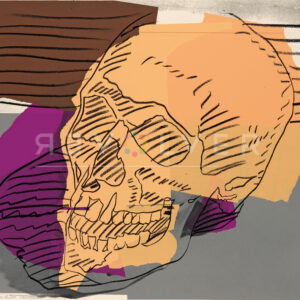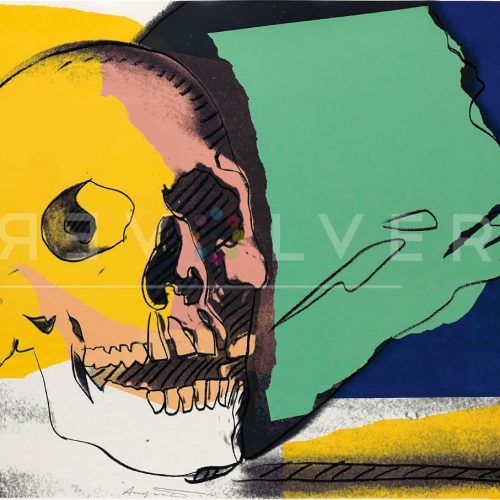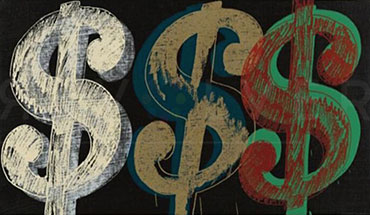Skulls 159 by Andy Warhol is one of four screenprints from the artist’s 1976 Skulls portfolio. Based on a photograph of a human skull taken by his assistant Ronnie Cutrone, this print is an example of Andy’s interest with light, using photography as a way to experiment its relationship to an object. Presented like an apple in a still life rather than the very real remains of a once-living human, the skull in Skulls 159 is untouched by the common wave of uneasiness that often accompanies such an image.
In this piece, the otherwise chilling subject is tackled the Andy Warhol Way, with vibrant hues, his signature color-blocking technique, and an innate sense of irony. Skulls 159‘s vibrant palette pulsates with an electrifying blend of contrasting fuchsia, blood red, yellow, and indigo. This composition effortlessly captures a sense of danger, akin to the exhilarating allure emanating from the strobe lights that once illuminated the dance floor of the renowned Studio 54 club in NYC. In stark contrast, the skull confronts its viewer directly, devoid of color but shaded in gray with hatching emphasizing the deep, contoured areas untouched by light. Warhol’s playfulness of hand makes Skulls 159 lively and a deliciously whimsical portrayal of a symbol feared by many.
Like Skulls 159, the other prints in the Skulls series are rendered with a delightful simplicity and linework reminiscent of middle school notebook doodles. Warhol’s repetition of the skull motif is seen both as a revisitation of his earlier examination of macabre imagery in his Death and Disaster portfolio and an embodiment of his zealous interest in mass production. Aptly naming his art studio “The Factory,” Warhol embraced the principles of a post-war industrialist economy by methodically reproducing countless variations of motifs and images throughout his career.
Andy Warhol’s Skulls portfolio represents an important shift in the artist’s work, thought to be influenced by an attempt on his life in 1968 by Valeria Solanas. In art history, the human skull represents the theme of “vanitas,” known as mortality or the fleeting nature of life. Thus, Warhol’s skull motif brushes his own experience with mortality, portrayed with his Pop sensibility. Skulls also signifies a long personal fascination with the concept of death and its detached portrayal in the increasingly media-centric society. Showcasing it as a mere fact of life, Warhol strips its fear factor and provokes the innate, morbid curiosity inside of us all. In the realm of Andy Warhol’s Skulls 159, death becomes a puckish character, inviting us to explore life and death with a mischievous wink and a whispered “Alas, poor Yorick, I Warholized him well.”
Andy Warhol, Self-Portrait with Skull, 1977, Polaroid Polacolor Type 108, 4 ¼ × 3 ⅜ inches (10.8 × 8.6 cm), The Andy Warhol Museum, Pittsburgh; Founding Collection, Contribution The Andy Warhol Foundation for the Visual Arts, Inc.

